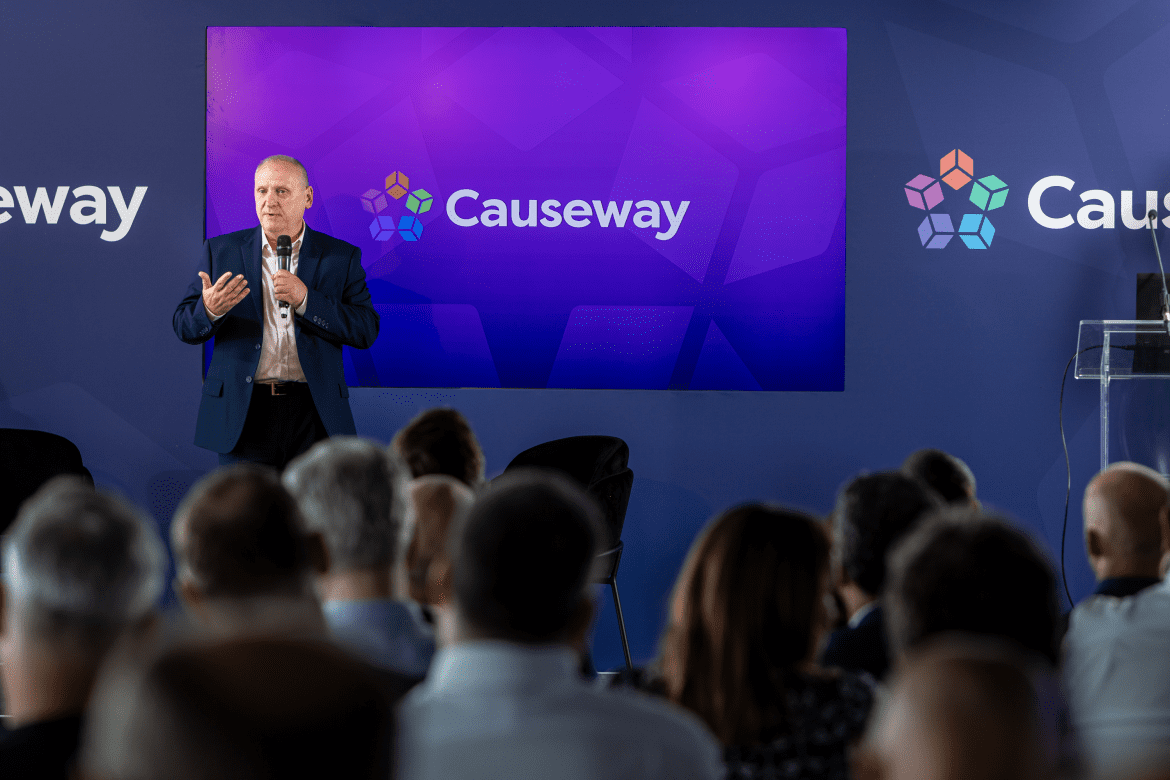Based on a conversation with Guy Wilmshurst-Smith, former Head of Training at Network Rail and the architect behind Sentinel – the rail industry’s digital skills passport.
He is the founder of GWS consulting and available for consultancy.
Digital skills passports were pioneered in the UK and are now used as far afield as Australia. Network Rail Sentinel was the first major pioneer of this way of working, and over a decade on from it’s conception, the rest of the built environment is rapidly following suit.
Sentinel is a live, industry-wide platform that proves people are safe, competent and ready for work the moment they step on site, and turns workforce data into something genuinely useful.
In a recent conversation we discussed Sentinel and the wider shift toward skills passports with Guy Wilmshurst-Smith. He is the original architect of the scheme, and below you can read his insights, including, what changed when the passport went digital, and what he’d do differently if starting again.
1: The problem Sentinel set out to solve
Before Sentinel went digital, the rail industry relied on physical cards to evidence training and competence. Over time, usage dropped to “only about two percent” actually showing the cards on site, despite rising complexity in the competencies people needed to hold. The result was poor assurance, high cost and daily friction.
Sentinel changed how it all worked: prove, in real time, that each person is competent for the task, medically fit, and clear on drugs and alcohol. Then capture trustworthy data at the point of work.
2: What changed with a digital passport
- Functionality up, costs down. At launch, Network Rail saw “a fourfold increase in functionality” and cut “overall costs around safety for that area by half.”
- Live, on-site assurance. Swipe-in at the start of a shift confirms competence, fatigue management and fitness to work. Those who fail the checks are automatically denied access to tasks.
- Adoption you can see. Early indicators showed people being refused access when they hadn’t swiped in correctly. More recently, “about fifteen hundred swipes a month” have been denied – thousands of potential incidents avoided over time.
3: From compliance to strategy: the impact of skills data
Once assurance is reliable, the same data becomes strategic:
- Workforce planning and skills gaps. Competence records support modelling, help set apprenticeship targets and reveal where capacity is thin.
- Supplier conversations that are grounded in fact. Actual hours, roles and competence levels reduce disputes – for example, you can see if a technician has been quietly swapped for a labourer.
- Anonymised exports at the press of a button. Aggregated, privacy-safe data can be shared with third parties for independent analysis and forecasting, then trended six months on to check progress.
4: Supply chain scale without the chaos
Sentinel covers roughly 120,000 people and a vast contractor base. Trying to gather consistent data from “about three thousand contractors” manually would be unworkable. A common, simple workflow at the point of work keeps the whole system coherent and fair.
5: Design principles that mattered
- Keep the workflow ruthlessly simple. “Discipline yourself to a really limited number of clicks to swipe in and move on.” If you turn the passport into a data-entry chore, people will route around it.
- Assurance before analytics. Prove identity, competence and fatigue first – the planning value follows naturally.
- Choose transparency by default. Shared standards across asset owners and operators (for example, with TfL in London) prevent double-shifting and close safety blind spots.
6: If you’re starting now – Guy’s three lessons
- Over-invest in engagement early. You’re dealing with a geographically, organisationally and culturally diverse workforce. Bring people in at the start and keep listening – trainers, supervisors, contractors and IT will have different friction points.
- Treat IT integration as a programme, not a task. Expect a rolling effort to connect identity, HR, training and site systems. Don’t let integration stall adoption.
- Pilot where it’s hardest, not easiest. Pick a representative area with real-world complexity. Surface problems in month one, not month six.
7: Not just for the biggest players
Sentinel shows why passports are compelling for asset owners. The same benefits exist for main contractors and smaller supply chains – faster starts to shifts, fewer disputes, cleaner audits and a calmer safety baseline. The key is adopting shared standards so skills are portable and onboarding is faster across sectors.
8: Why it worked
Guy’s career in the Royal Engineers shaped a simple conviction: success needs two things – fantastic information and fantastic people. Sentinel’s impact flows from that pairing. Get trustworthy information at the point of work. Use it to enable people, not slow them down.
This is just a taster of the insights Guy shared – you can watch the whole conversation here.



